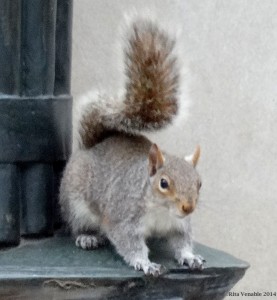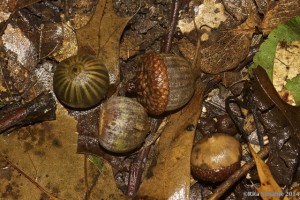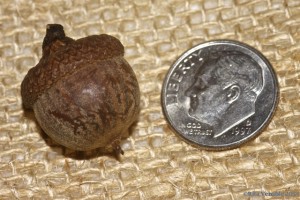I sometimes think that the other months were constituted mainly as a fitting interlude between Octobers.
–Aldo Leopold, A Sand County Almanac
Lying in bed the other night before a storm came through, I could hear the soft whoo-whoo-whoo-ing of a great-horned owl. It must be alone; I did not hear another bird answer as I usually do in December.
I am glad to hear the owl calling—it eats rabbits and we have way too many rabbits in our suburban-becoming-urban neighborhood eating our garden flowers and vegetables. I hope the owl is here for the season. Owls tend to hunt in the same areas every night; thus they have a solid familiarity with their home areas.
An owl doesn’t have a very good sense of smell, but its ears are so sensitive, it can pinpoint a mouse’s location, even in the dark, simply by the sound of the mouse’s tiny feet shuffling along. The mouse or rabbit probably doesn’t even hear the owl approaching at about 40 miles per hour because the owl’s primary feathers are saw-tooth on the leading edge, equipping it with almost soundless flight.
Every part of the prey is eaten—bones, teeth, and hair included. These parts are later coughed up as pellets and can be found underneath trees where the owls have eaten. You can look for them in the woods; children are especially good at spying owl pellets.
The muted whoo-whoo-whoo-ing of the owl reminds me of Leopold’s saying, “The owl, in his trisyllabic commentary, plays down the story of the night’s murders.” Indeed.
The next day, I saw two squirrels chasing each other enthusiastically. The days have been sunny and warm, but the nights are cooler. Monarchs are floating their way westward and Cloudless Sulphurs, also migratory, are searching for nectar among our garden fare. Our blue jays are busy talking to each other and flying around.

Nut gathering in our yard is at a predictable yearly high. The other day after we had our lawn aerated, I saw a squirrel investigating the holes left by the machinery. I am assuming it is thinking of putting nuts into the holes and covering them up for the winter. To me, this is a sure sign that squirrels, in this neighborhood at least, are getting smarter. I have observed our squirrels the last few years and they no longer hesitate in the middle of the road and get run over. Once started, they complete the run to the other side of the road thus avoiding being flattened. It is not a stretch to see how this behavior would be selected for in a few generations in a relatively closed population such as this one.
We have two pin oaks in the back yard and in September and October both produce acorns that the squirrels eat. I had not noticed any nuts being produced by either of these trees until I went looking for them. Then I saw the small pieces of nutshell underneath both trees. By March there will only be a few empty shells near the tree bases.

Leopold stated it well when he wrote:
By sun-up every squirrel is exaggerating some fancied indignity to his person, and every jay proclaiming with false emotion about suppositious dangers to society, at this very moment discovered by him.
-Aldo Leopold, A Sand County Almanac
I love October, too.
